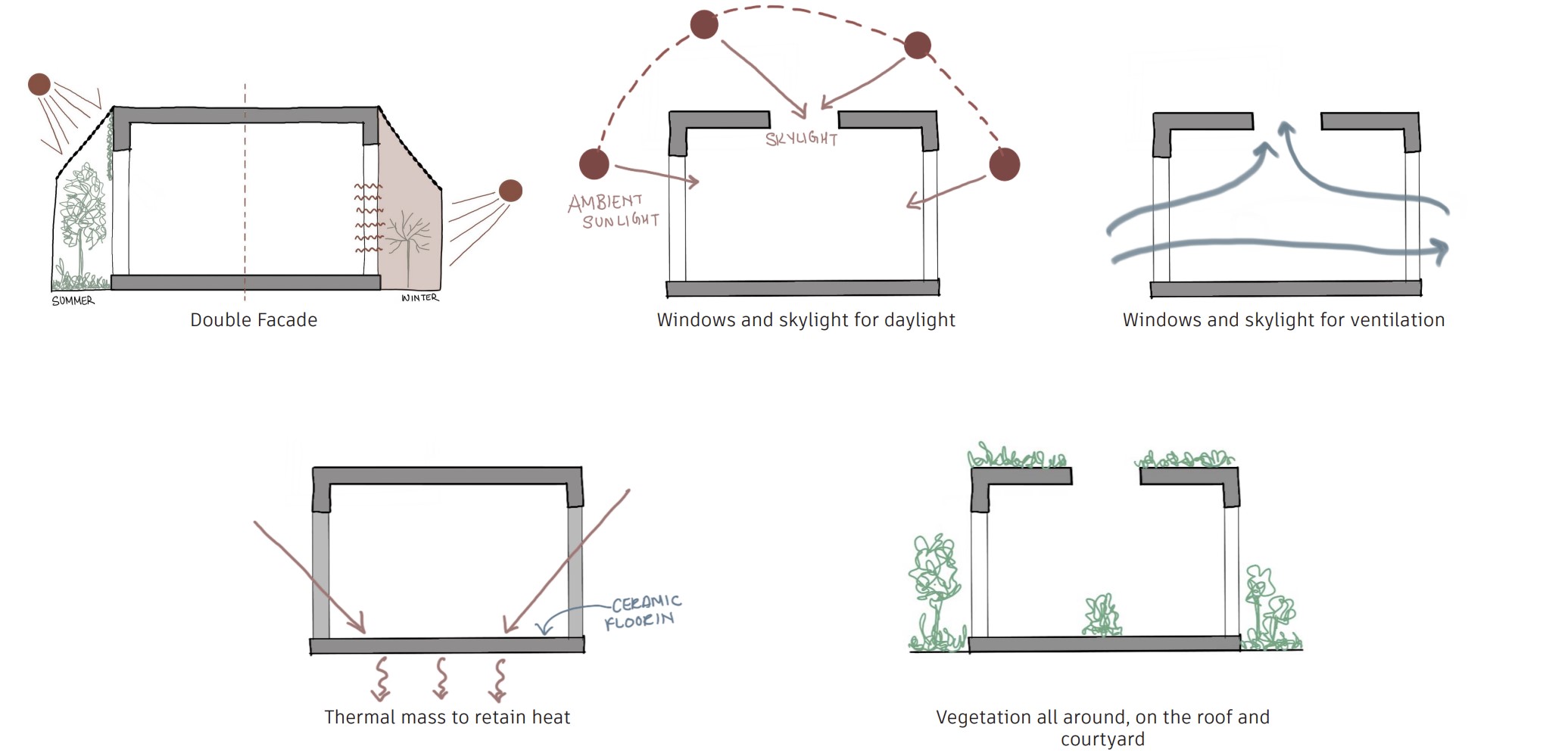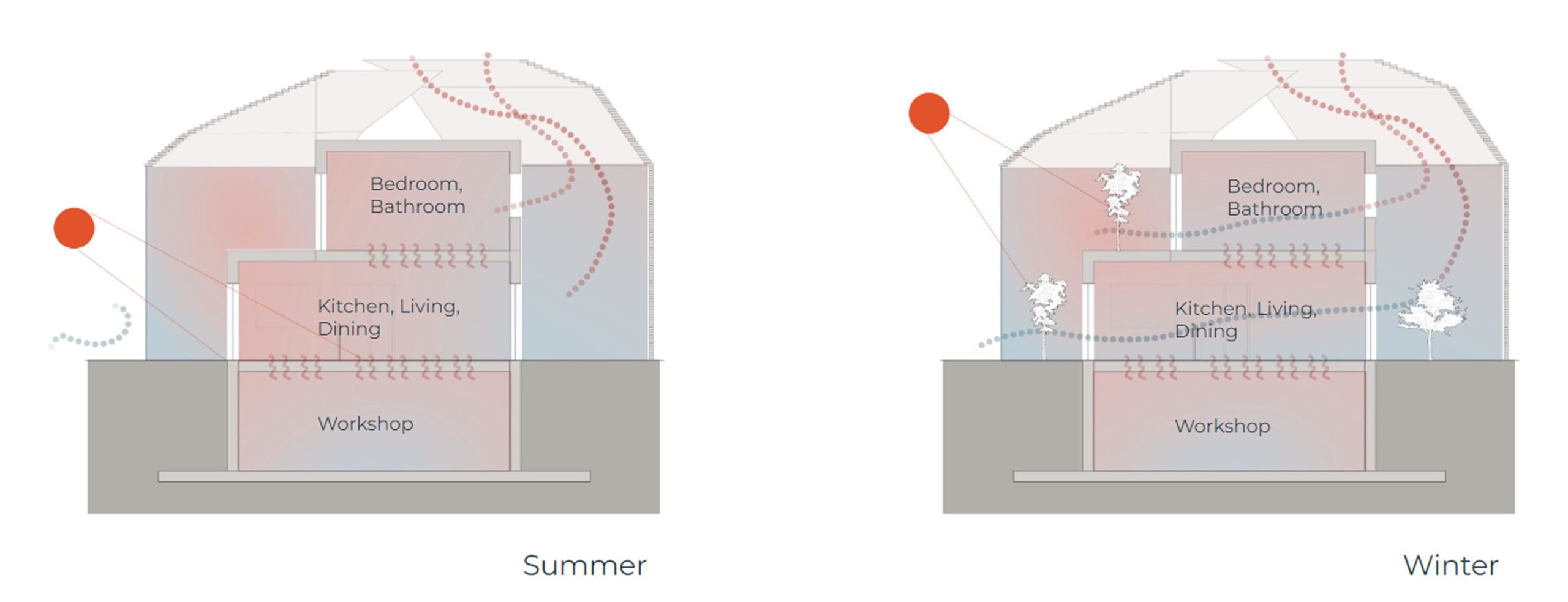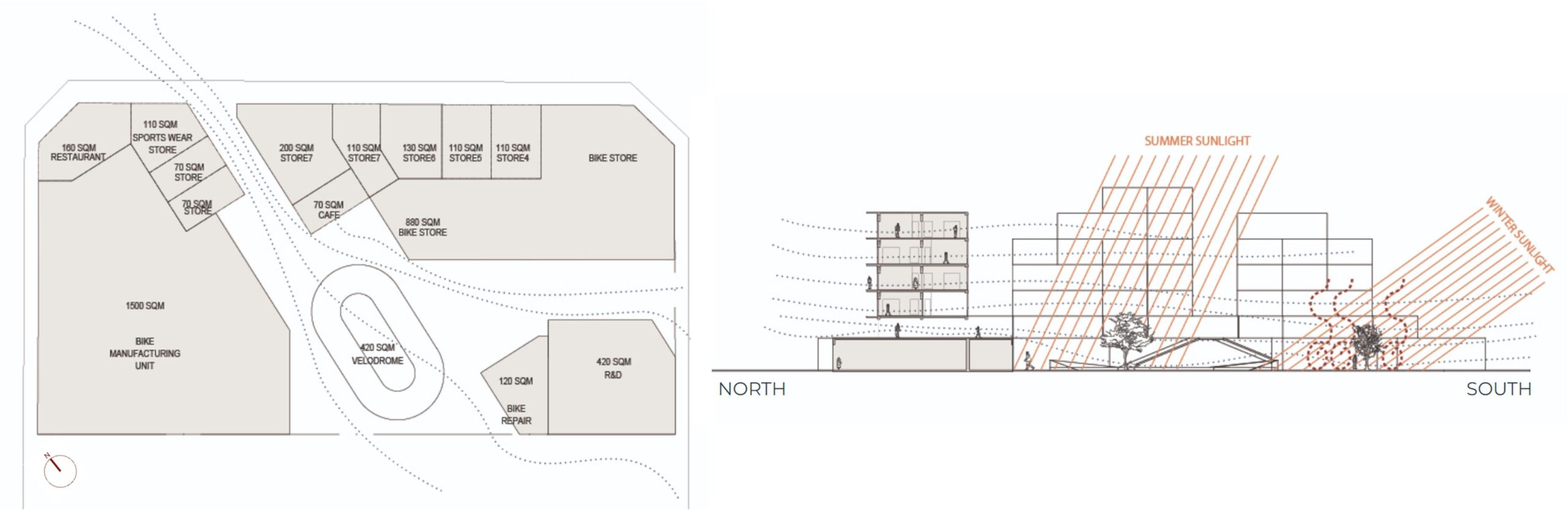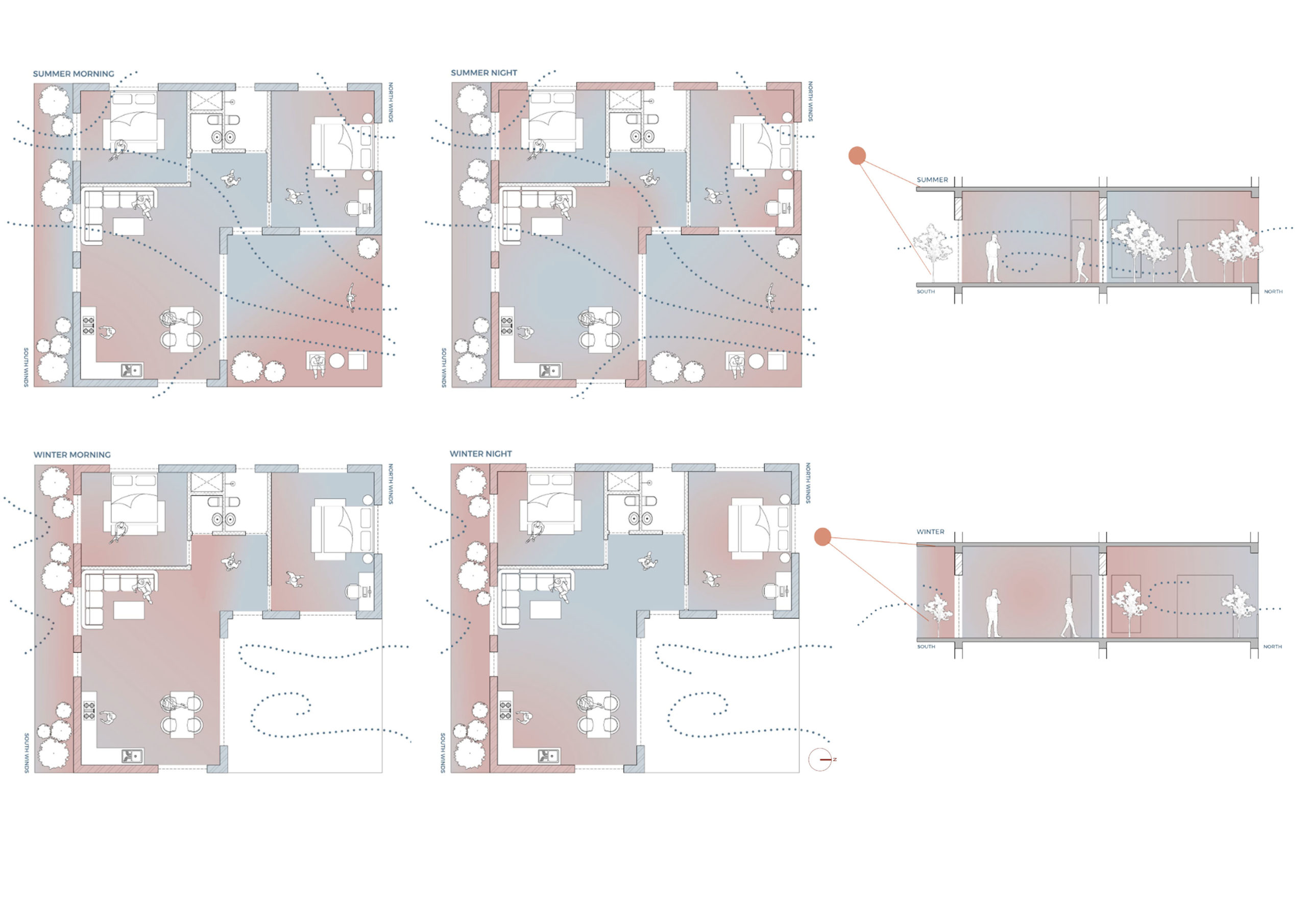Incorporating the principles of Industry 4.0, our architectural project redefines urban living by seamlessly integrating sustainable design strategies with advanced manufacturing techniques. With a focus on promoting bicycle culture and health, our industry manufactures bikes.
We present a visionary housing project that integrates thermodynamic principles to ensure the comfort and well-being of its residents while optimising energy efficiency and environmental sustainability. By strategically orienting buildings to maximise natural ventilation and solar exposure and by incorporating high-efficiency insulation materials and shading devices, we create an environment that minimises energy consumption while maximising comfort for residents.
Preliminary Design | Understanding Climate in Barcelona
Using Climate Consultant 6.0, we studied the climatic conditions of Barcelona. The data helped us formulate our design by incorporating climatic design strategies. We analysed the sun path, wind direction, wind speed, relative humidity, precipitation and psychrometric chart. The chart gave us the cumulative weather data and suggested a few passive design strategies, while the main wind direction and the sun path directed the orientation of our structure.


Thermal design strategies
After analysing data from climate consultant, we formulated several passive design strategies tailored for the Mediterranean climate. We added a double facade with an inclined roof and glass facade. During the summer, the inclined roof works as a shading device and opening the glass facade allows wind to enter in the building. During the winter, the sun is lower, heating up the closed glass facade, creating a greenhouse effect that will further radiate into the building and heat it. Tactically placed windows allow for the sunlight to enter and cross-ventilation to refresh the air inside the building. Adding thermal mass, we make sure that temperature peaks are buffered and both heat and cold are redistributed slowly into the building. Lastly, the addition of vegetation in, on and around the building, creates an extra protection barrier and allows to cool and clean the air coming through.

Prototype
Considering the same site and climatic conditions, we developed a prototype implementing most of these climate responsive strategies. The building is oriented in the east-west direction, the longer facades are oriented in the north-south directions to maximise the surface through which the wind can enter the building.
Ample thought was also given to the placement of the rooms, such as placing the living and dining rooms south, as they need more heat and sunlight. The kitchen, which is automatically warmed by its use, can be placed towards the north. By placing the bedroom above the kitchen, we also make optimal use of the heat generated by the kitchen to heat up the bedroom floor.
The envelope around the building is tactically perforating, allowing wind and daylight to penetrate to the interior building. The shape of the envelope is inspired by the aerodynamics of a bike, stimulating wind circulation around the inner layer. The envelope encloses the structure creating a greenhouse effect in the winter. In summer, the glass facade is open and allows for wind to enter, be cooled by the vegetation and refresh the air inside the building. The envelope tapers at the top also creating a solar chimney effect, pushing warm air out and further encouraging air circulation. Additionally, this double facade offers an extra shaded outdoor living space to be used during the warm months.


Design Development
Once the thermodynamic design strategies were fully understood, we could expand them to a bigger scale and start to design the whole block.
Our objective was to prioritise using passive design strategies that capitalise on natural energy flows and minimise reliance on mechanical systems. We began with exploring one apartment or house, it started with playing with a cuboid to form an L-shaped plan. We designed a built environment that is both responsive to its surroundings and resilient in the face of environmental uncertainties.

Started off as a cuboid which was blocked down into a grid of 5m x 5m x 3.5m. We deleted a few balcony blocks and further staggered them to maximize the amount of sunlight and wind flow into the apartments.

The velodrome being an integral part of our design was oriented on the north-south direction on the site. we then projected our industry onto the ground floor creating openings -placed to allow wind flow through the site- for horizontal circulation. The residential units were later stacked, playing with levels, and staggered to allow enough light to enter the building. The first floor of the industry was later changed to allow a smooth transition from residence to industry.

Site Plan and Section
Our ground floor is fully devoted to our industry, bikes. The site is designed around our velodrome, which is an integral part of our design and creates an inclusive community and urban space for the residents and neighborhood. The ground floor plan is designed by incorporating openings in the north and south directions to allow wind flow through the site. This would result in ventilating the velodrome even when it is at maximum capacity of people.

Incident Radiation
The amount of solar radiation on the massing model was analysed using digital tools like grasshopper and ladybug. The data shows that our terraces and balconies have sufficient sunlight which in turn lights up the interior spaces. This tool also helped double check that sun would reach all the south facades, even of the buildings located directly north of other ones.
Given the big amount of sun on the most south facades, attention needs to be paid to solar shading devices.

Housing Layout
Inspired by modularity, the housing plan is a 10mx10m module which is a 2 bedroom apartment. The southern part of the house consists of a sun room which behaves as a green house in winter and is opened for ventilation during summer. Each apartment has a balcony which ensures cross ventilation in every room.

Materials and Vegetation
We explored optimal materials for achieving thermal comfort, as well as identified vegetation suitable for the Mediterranean climate.


